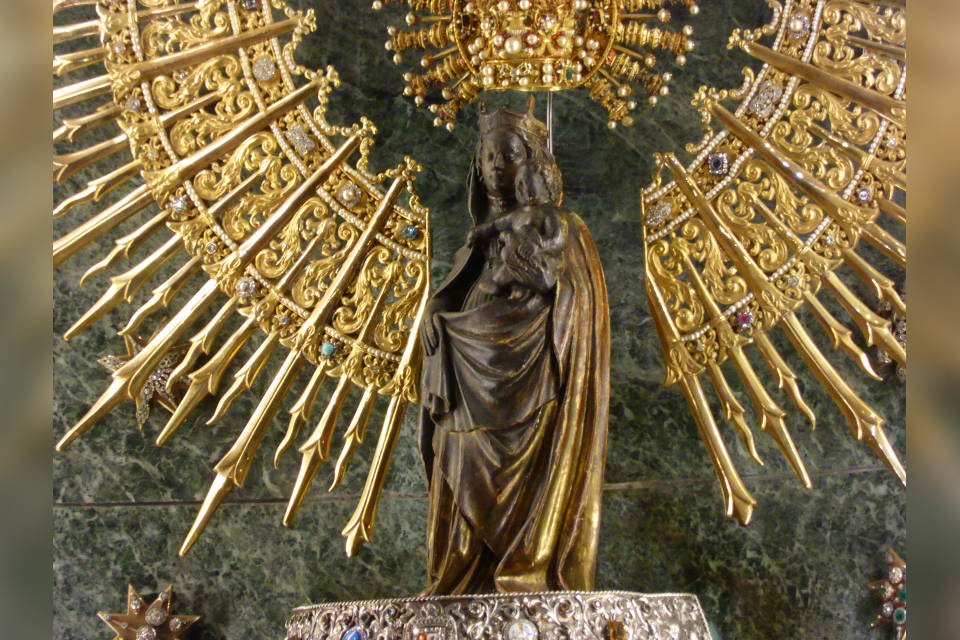 Photo: Carlos Teixidor Cadenas
Photo: Carlos Teixidor Cadenas
The Column
Zaragoza is a less popular destination compared to the first cities we visited in Spain. Although considered a pilgrimage site, seasoned pilgrims would prefer to follow the road to Santiago de Compostela, the burial site of St. James the Apostle, which UNESCO declared a world heritage site. Our group wasn’t expecting much then from this town that looked humdrum compared to the cities we previously visited. Our driver-guide must have noticed this lack of enthusiasm that he felt obliged to explain that we just had to explore the church across us and locate a column, a pillar.
The Basilica of Nuestra Señora del Pilar enshrines the pillar where Mary while living in Jerusalem, appeared to the Apostle James in AD 40 while preaching in Spain. For Catholics, it is considered the first Marian apparition, which was unique as it happened while Mary was still living on Earth.
During the opening days of the Spanish Civil War in 1936, two bombs were dropped on the church by airplanes; miraculously, neither exploded.
In the Philippines, Our Lady of the Pillar* is honored as patroness of seven parishes, three of which I had the chance to visit before I graduated from college. The first is in Zamboanga City, where the Virgin of the Pillar has been venerated for four centuries now. The bas relief of her image atop the eastern gate of the 17th-century Spanish military fort dedicated to the Virgin, Fort Pilar, is now a Catholic Marian shrine.
I have also visited the shrine dedicated to the Nuestra Señora del Pilar located at Magsaysay Park in Davao, built through the collaborative efforts of a local group of Zamboangueños based in Davao. Likewise, I have seen the image of Our Lady of the Pillar, enshrined at the Imus Cathedral in Cavite.
Ironically, despite the longer length of time that I have stayed in Metro Manila, it was only a decade and a half ago that I first set foot in Santa Cruz church, where another image of Our Lady of the Pillar is venerated. The sculpture was brought to the Philippines by the Jesuits from Zaragoza, Spain before 1743. Its body, carved from mahogany, is covered with silver; while the head and hands are ivory. The image wears an embroidered mantle/cape, wigs, and crowns for the Mother and Child.
When the church was razed during the last world war, only the facade, bell tower, and side walls remained. Among the few artifacts saved was the venerated image of Our Lady on the Pillar.
Our group in Zaragosa eventually managed to locate the pillar, and it turned out that our day in Zaragoza was far from humdrum. As the pillar is associated with St. James’ decision to stay in Spain and Christianize it, and since Christianity reached the Philippines via Spain, the pillar certainly was also meant for us, Filipinos.
Touching it was a gripping moment.
*The Feast of Our Lady of the Pillar (Nuestra Señora del Pilar) is celebrated annually on the 12th of October.


No Comments